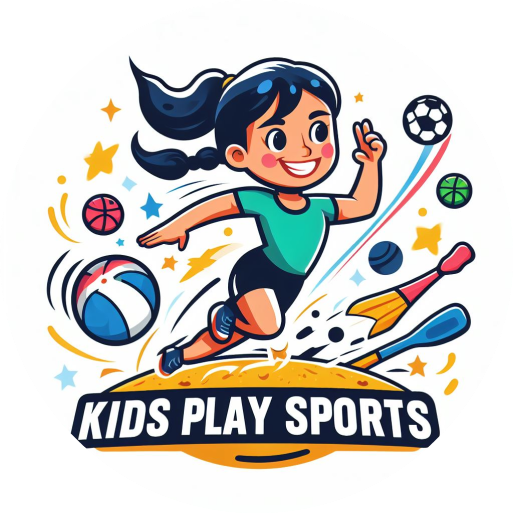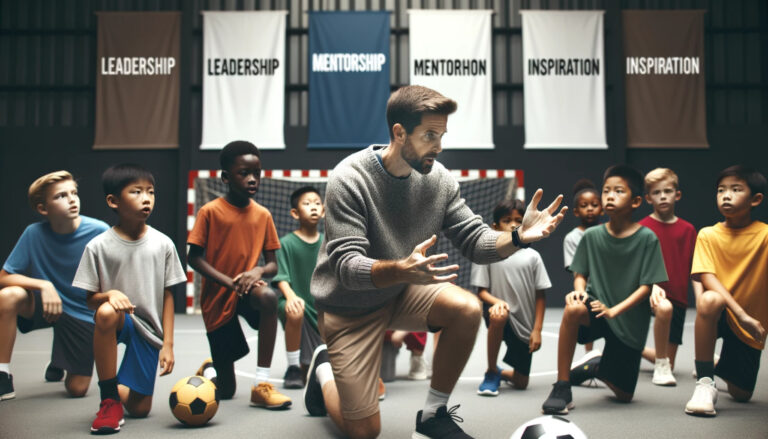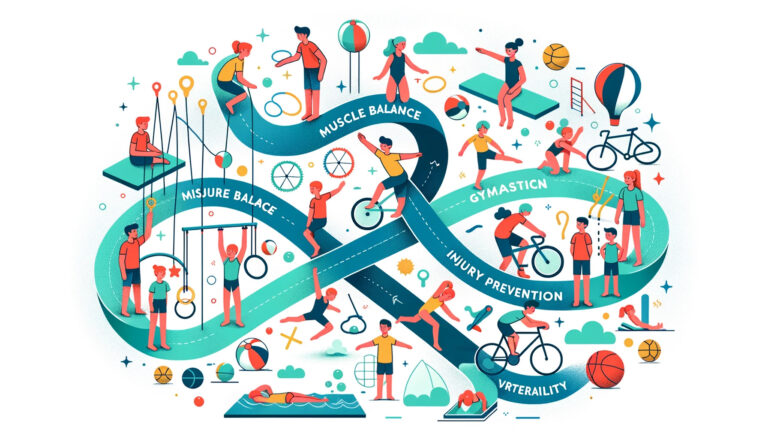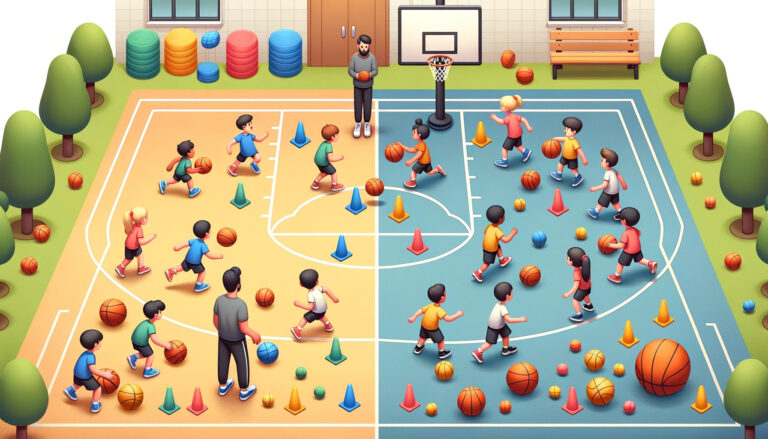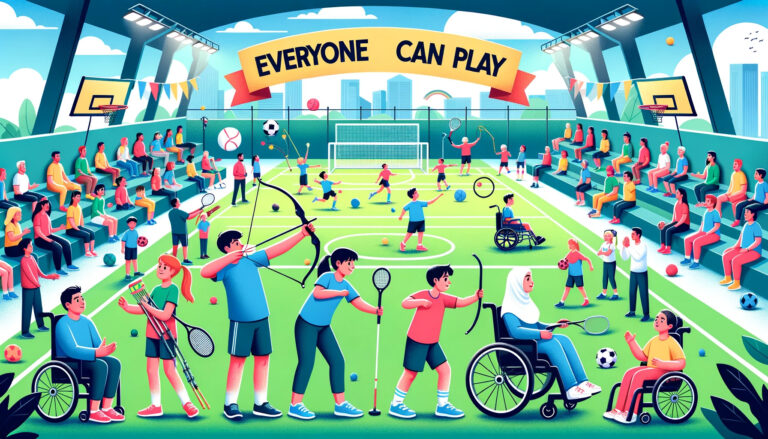Incorporating Fun and Play in Kids’ Sports Training Sessions
- The Importance of Rest and Recovery in Young Athletes’ Regimens - October 23, 2023
- Boosting Stamina and Endurance in Young Athletes: Tips and Tricks - October 23, 2023
- The Role of Coaches in Shaping Young Athletes - October 23, 2023
The Importance of Fun and Play in Kids’ Sports Training Sessions
Creating a fun and playful environment is crucial when it comes to kids’ sports training sessions. By incorporating elements of fun and play, children are more likely to enjoy the experience and remain engaged throughout the session. When kids associate sports with fun, they develop a positive attitude towards physical activity, which can promote long-term participation and a healthy lifestyle. By making training sessions enjoyable, coaches can capture children’s attention, foster a love for the sport, and create an environment that encourages active learning.
In addition to promoting enjoyment, incorporating fun and play into kids’ sports training sessions can also enhance skill development. When children are engaged in playful activities, they are more willing to take risks, experiment, and explore different techniques. This freedom allows them to develop their motor skills, coordination, and decision-making abilities in a natural and relaxed manner. By integrating fun exercises and games into the training sessions, coaches can provide children with the opportunity to learn and progress at their own pace, while building a solid foundation of essential skills that will benefit them in their sports journey.
Creating an Engaging Environment for Kids’ Sports Training
A key aspect of creating an engaging environment for kids’ sports training is incorporating various elements of fun and play. When children enjoy what they are doing, they are more likely to stay engaged and motivated throughout the training session. Incorporating interactive drills and games can be an effective way to make the sessions more enjoyable and exciting for the young athletes. Introducing challenges, competitions, and friendly matches can not only make the training sessions more engaging, but also foster a sense of team spirit and collaboration among the children. By combining structured activities with playful elements, coaches can strike a balance between skill development and enjoyment in kids’ sports training.
Another important factor in creating an engaging environment is encouraging creativity and imagination in the training sessions. Children are naturally curious and imaginative, and by tapping into these qualities, coaches can enhance the learning experience for the young athletes. Incorporating exercises that require problem-solving, decision-making, and improvisation can stimulate the children’s creativity and help them to think outside of the box. Moreover, allowing the kids to express themselves through their own ideas and interpretations can boost their self-confidence and make the training sessions more enjoyable for them. By fostering a supportive and open environment that values creativity and imagination, coaches can create an engaging atmosphere where kids can thrive and have fun while honing their sports skills.
Incorporating Interactive Drills and Games in Kids’ Sports Training Sessions
Incorporating interactive drills and games is a crucial component of kids’ sports training sessions. These activities not only make the training sessions more enjoyable and engaging for the children but also aid in their skill development and overall athletic performance. By introducing interactive drills and games, coaches can create an environment that promotes active participation, learning, and fun.
One of the key benefits of incorporating interactive drills and games is that they enhance the children’s ability to understand and execute different techniques in a more practical and interactive manner. Through these activities, kids can apply the skills they have been taught in a game-like scenario, which further strengthens their understanding and muscle memory. Additionally, interactive drills and games provide an opportunity for children to assess and improve their decision-making abilities, as they have to think on their feet and react quickly to changing situations on the field. This helps them develop their cognitive skills and strategic thinking, which are essential for success in any sport.
Fostering Teamwork and Collaboration Through Fun Activities in Kids’ Sports Training
Incorporating fun activities in kids’ sports training sessions not only helps improve their physical skills but also fosters teamwork and collaboration. When children engage in fun and interactive games, they learn to work together as a team, communicate effectively, and develop trust among their peers. Whether it’s a relay race, a scavenger hunt, or a cooperative ball game, these activities encourage kids to rely on each other, strategize together, and achieve a common goal.
Moreover, fun activities in sports training sessions provide opportunities for children to learn how to collaborate with others. Team-building exercises such as obstacle courses or group problem-solving challenges require kids to brainstorm ideas, listen to different perspectives, and find solutions as a collective unit. By doing so, they not only enhance their social skills but also develop important traits like empathy, understanding, and respect for others. Through these fun activities, kids not only strengthen their physical abilities but also learn lifelong lessons of teamwork and collaboration that will benefit them both on and off the sports field.
Developing Essential Skills Through Playful Exercises in Kids’ Sports Training
Developing essential skills through playful exercises is a key aspect of kids’ sports training. By incorporating fun and interactive activities, coaches can create a dynamic environment where young athletes can learn, grow, and enjoy themselves. Playful exercises not only build physical skills but also nurture cognitive abilities and social development.
During sports training sessions, coaches can introduce various games and drills that promote balance, coordination, and agility. These exercises can simulate real-life game scenarios, allowing kids to practice their decision-making skills and improve their game sense. By engaging in playful challenges and competitions, young athletes not only become more confident in their abilities but also learn the importance of teamwork and collaboration. Through these activities, children develop not only their physical prowess but also their mental acuity, preparing them for the challenges they may encounter in future sports endeavors.
Balancing Structure and Playfulness in Kids’ Sports Training Sessions
Structure and playfulness are two important aspects to consider when designing kids’ sports training sessions. While structure provides a framework and helps maintain discipline, playfulness brings an element of fun and excitement. Striking the right balance between structure and playfulness can create a positive and engaging environment for children to develop their sports skills.
Too much structure can make sports training sessions monotonous and dull. It is important to incorporate interactive drills and games that not only challenge the kids physically, but also stimulate their minds. By introducing fun activities and allowing kids to explore their creativity and imagination, they become more engaged and enthusiastic about the training sessions. This not only helps in building a positive attitude towards sports but also fosters teamwork and collaboration among the children.
Encouraging Creativity and Imagination in Kids’ Sports Training
Incorporating creativity and imagination into kids’ sports training sessions is crucial for their overall development. By encouraging kids to think outside the box and come up with innovative ideas, they not only enhance their problem-solving skills but also foster a sense of independence and self-expression. One effective way to promote creativity is through open-ended exercises that allow kids to explore different strategies and approaches. This can be achieved by providing them with a variety of equipment and props that encourage imaginative play, such as cones, hula hoops, and agility ladders. By giving kids the freedom to use these tools in unique ways, they are able to tap into their creativity and develop their own style of play.
Moreover, incorporating storytelling and role-playing activities can further stimulate their imagination during sports training. This can be done by creating fictional scenarios or characters that the kids can relate to and engage with. For instance, organizing a friendly competition where each child takes on the persona of their favorite athlete or superhero can not only make the training session exciting but also ignite their imagination. By allowing kids to embody these fictional characters, they are encouraged to think creatively and envision themselves as successful athletes, enhancing their motivation and enjoyment of the sport. Overall, by fostering creativity and imagination, kids’ sports training sessions become more engaging, enjoyable, and fruitful for their overall development.
Incorporating Fun Challenges and Competitions in Kids’ Sports Training
When it comes to kids’ sports training, incorporating fun challenges and competitions can be a great way to keep children engaged and motivated. By introducing friendly competitions and exciting challenges, coaches and trainers can create an environment that encourages kids to give their best and enjoy the training sessions.
One effective way to incorporate fun challenges is by organizing small-sided games or mini tournaments. This not only adds an element of competition but also allows kids to apply their skills in a practical setting. These games can be designed to focus on specific aspects of the sport, such as accuracy, speed, or teamwork. By keeping the games short and intense, kids are more likely to stay focused and actively participate, fostering their competitive spirit in a lighthearted manner.
Utilizing Props and Equipment to Make Sports Training Sessions Fun for Kids
One effective way to make sports training sessions fun for kids is by utilizing props and equipment. These tools not only add an element of excitement and variety to the training, but they also help to engage the children’s imagination and creativity. By incorporating different props and equipment into the sessions, trainers can create a more dynamic and interactive environment that keeps the kids actively involved and motivated.
Props such as cones, hoops, and agility ladders can be used to set up various obstacle courses and challenges. This not only enhances the children’s physical skills and coordination but also adds an element of fun and competition to the training. Additionally, using different equipment like balls, bats, or racquets can help to simulate game-like scenarios and make the training sessions more enjoyable for the kids. Whether it’s using colorful balls for drills or having mini-games with inflatable targets, the use of props and equipment can greatly enhance the overall experience for young athletes.
Building Confidence and Enjoyment in Kids’ Sports Training Sessions.
Building confidence and enjoyment in kids’ sports training sessions plays a crucial role in ensuring a positive and successful experience for young athletes. When children feel confident in their abilities and enjoy what they are doing, they are more likely to engage fully and perform at their best. To achieve this, coaches and trainers need to create an environment that fosters positive reinforcement and emphasizes personal growth rather than just winning or losing.
One effective way to build confidence and enjoyment is through providing opportunities for success. Coaches can do this by incorporating drills and activities that match the skill levels of the children, allowing them to experience small victories and feel a sense of accomplishment. By gradually increasing the level of difficulty, they can challenge the athletes to push themselves while still providing feasible goals to strive for. This approach helps kids feel competent and motivated, boosting their confidence and enjoyment in the process. Additionally, providing specific and constructive feedback helps athletes understand their areas of improvement and encourages them to continue developing their skills.
